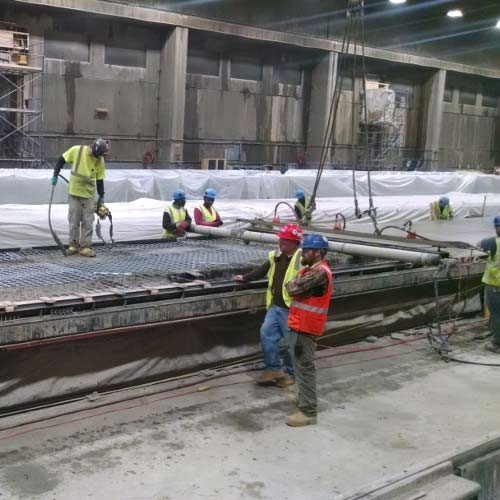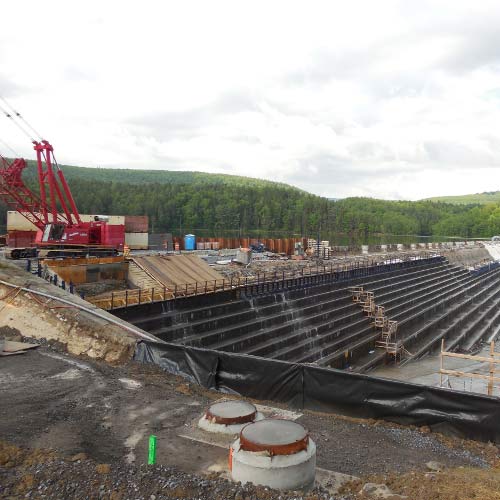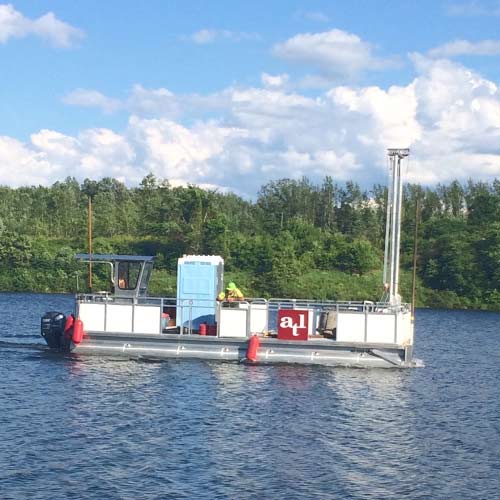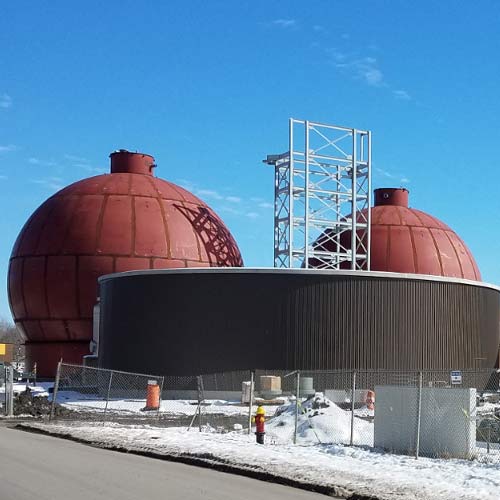Click the following link to view the PDF of this paper: Estimating In-Place Concrete Strength – Rebound Hammer and Windsor Probe

Steven N. Moore, PE
Senior Engineer
Atlantic Testing Laboratories
Concrete Strength is the most common performance measurement used by engineers when designing buildings and other structures and identifying compressive strength of in-place concrete is used to determine the performance of materials in their service condition or for rehabilitation and evaluation. ACI document 228.1R, published by The American Concrete Institute, discusses different ways to estimate the in-place strength of concrete. Two of the most common methods are rebound hammer (ASTM C805) and penetration resistance (ASTM C803), also known as Windsor probe. Additional tests discussed in ACI 228.1R include pullout test (ASTM C900), break-off number (ASTM C1150), ultrasonic pulse velocity (ASTM C597), maturity method (ASTM C1074), and cast-in-place cylinders (ASTM C873).
Both the rebound hammer and Windsor probe rely on a known amount of kinetic energy impacting the surface of the concrete and measuring the dynamic response of the concrete, the rebound of the hammer, or the penetration depth of a steel probe.
ASTM C805 is the standard test method for the use of the rebound hammer. The test gives a rebound number that can be used to evaluate the relative strength of the concrete at different locations, assuming all other factors are consistent, mix design, surface texture, approximate age, etc. Comparing the rebound number of concrete with a smooth troweled finish to that of a brushed finish is not appropriate, nor would it be appropriate to compare the rebound number of an interior non-air entrained column to that of an exterior foundation wall, even if they both have a design strength of 4000 psi.
ASTM C803 is the standard test method for the use of the Windsor probe system and results in a penetration depth that can also be used to evaluate the relative strength of concrete. With the Windsor probe, surface characteristics, such as formed, brushed, or troweled finishes, also have an impact on the test results, but not as much as they do in the rebound hammer test.
For both the rebound hammer and the Windsor probe, manufacturers typically provide a generalized strength correlation with the equipment. While often reported, these strength correlations often do not accurately represent the specific concrete being tested. ACI 228.1R provides some guidance on how to establish a strength relationship, which will vary if the results will be used for new construction or existing construction, but generally consists of performing the in-place testing (rebound hammer, Windsor probe, etc.) and correlating these results with cast specimens for new construction or extracted cores for existing construction. The statistical analysis may also depend on the overall purpose of the testing program.
ATL routinely performs rebound hammer and Windsor probe testing, as well as ultrasonic pulse velocity, the maturity method, concrete coring, and can provide strength correlations for new or existing construction. If you have the need to estimate in-place concrete strength, ATL, a WBE certified company, can assist. For more information, contact Steve Moore, PE at 315-386-4578, info@atlantictesting.com, or visit AtlanticTesting.com.
|
ASSOCIATED SERVICES |
 |









































